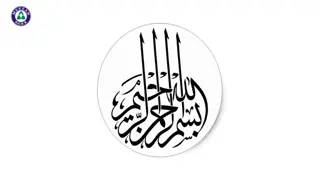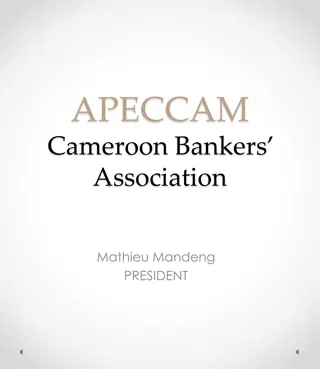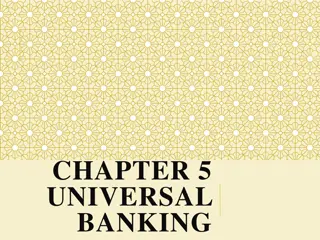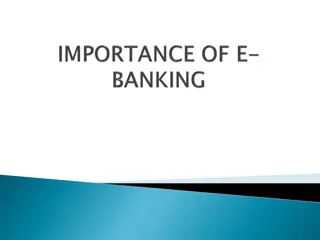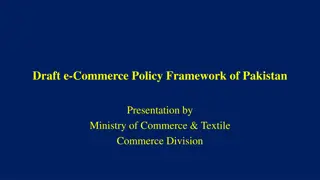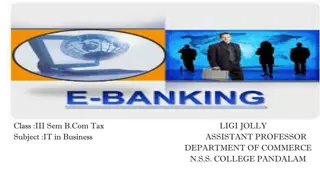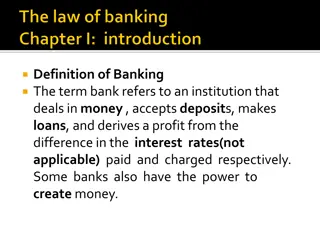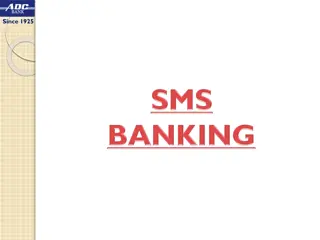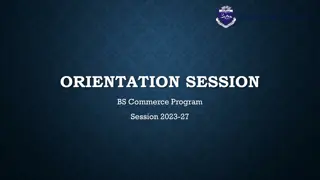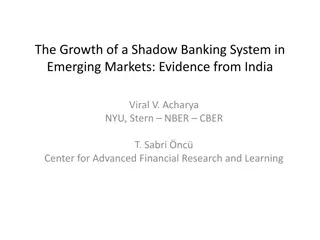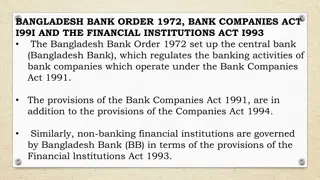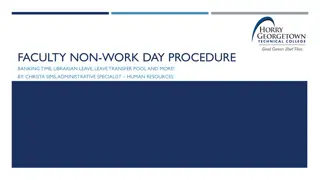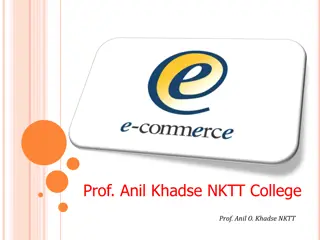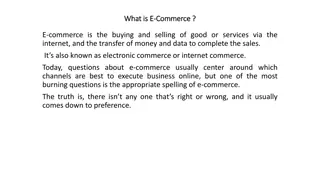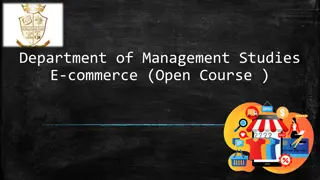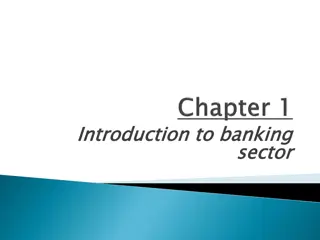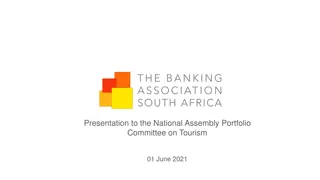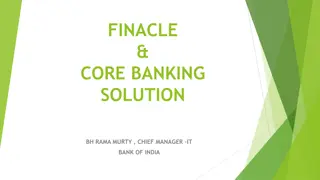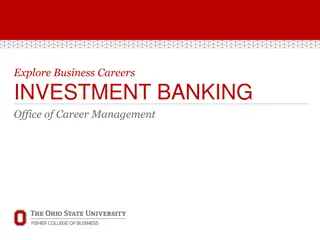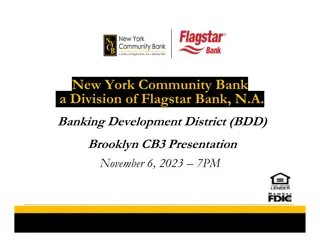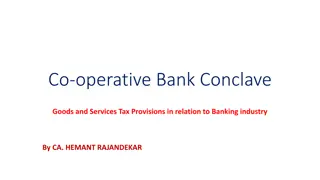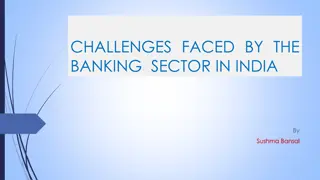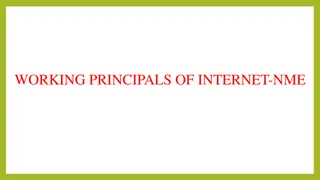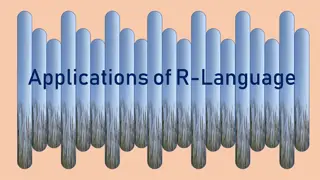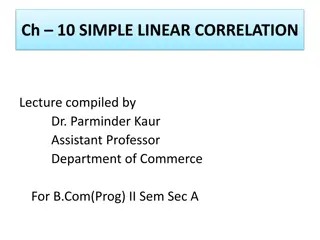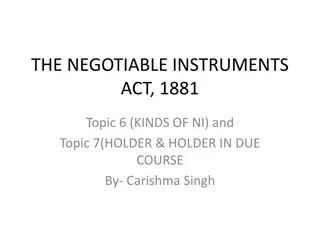Understanding Cheques in Commerce and Banking
Explore the world of cheques in commerce with lectures by Dr. Kaynat Tawar on relevant topics such as cheque types, crossing, definitions, and characteristics. Learn about the meaning of cheques, their importance, and how they serve as a safe and convenient payment method in the financial world.
Download Presentation

Please find below an Image/Link to download the presentation.
The content on the website is provided AS IS for your information and personal use only. It may not be sold, licensed, or shared on other websites without obtaining consent from the author. Download presentation by click this link. If you encounter any issues during the download, it is possible that the publisher has removed the file from their server.
E N D
Presentation Transcript
SCHOOL OF STUDIES IN COMMERCE VIKRAM UNIVERSITY, UJJAIN (M.P.) 1 DR KAYNAT TAWAR
CHEQUE AND CROSSING OF CHEQUE (NEGOTIABLE INSTRUMENT) LECTURE BY : DR. KAYNAT TAWAR 2 DR KAYNAT TAWAR
RELEVANT TOPICS ON CHEQUE AND CROSSING OF CHEQUE (NEGOTIABLE INSTRUMENT) FOR B.COM (HONS.) B.B.A. (HONS.) M.COM. 3 DR KAYNAT TAWAR
TOPICS MEANING OF CHEQUE DEFINITION OF A CHEQUE CHARACTERISTICS OF CHEQUE SPECIMEN OF CHEQUE TYPES OF CHEQUES WHY CROSSING OF CHEQUE IS BEING USED ? TYPES OF CROSSING GENERAL CROSSING SPECIMEN OF GENERAL CROSSING SPECIAL CROSSING SPECIMEN OF SPECIAL CROSSING NOT NEGOTIABLE CROSSING RESTRICTIVE CROSSING CHEQUES CROSSED A/C PAYEE SPECIMEN OF A/C PAYEE CROSSED CHEQUE 4 DR KAYNAT TAWAR
MEANING OF CHEQUE A cheque is a bill of exchange drawn on a specified banker and not expressed to be payable otherwise than on demand. It includes the electronic image of a truncated cheque and a cheque in the electronic form. Cheque is an important negotiable instrument which can transferred by mere hand delivery. Cheque is used to make safe and convenient payment. It is less risky and the danger of loss is minimised. 5 DR KAYNAT TAWAR
DEFINITION OF A CHEQUE Cheque is an instrument in writing containing an unconditional order , addressed to a banker, sign by the person who has deposited money with the banker, requiring him to pay on demand a certain sum of money only to or to the order of certain person or to the bearer of instrument. 6 DR KAYNAT TAWAR
CHARACTERISTICS OF CHEQUE Cheque is an instrument in writing. Cheque contains an unconditional order. Cheque is drawn by a customer on his bank. Cheque must be signed by customer. Cheque must be payable on demand. Cheque must mention exact amount amount to be paid. Payee must certain to whom payment is made. Cheque must be duly dated by customer of bank. Cheque has 3 parties: Drawer, Drawee &Payee. 7 DR KAYNAT TAWAR
SPECIMEN OF CHEQUE 8 DR KAYNAT TAWAR
TYPES OF CHEQUES 1. Bearer Cheque : The bearer cheque is payable to the person specified there in or to any other else who presents it to the bank for payment. However, such cheques are risky, this is because if such cheques are lost, the finder to the cheque can collect payment from the bank. 2. Open Cheque /uncrossed cheque : when a cheque is not crossed, it is known as an open cheque or uncrossed cheque . The payment of such a cheque can be obtained at the counter of the bank. an open cheque may be a bearer cheque or an order one. 9 DR KAYNAT TAWAR
3. Crossed Cheque : crossing of cheque means drawing two parallel lines on the face of the cheque with or without additional words like & CO or Account Payee or Not Negotiable . A crossed cheque cannot be encashed at the cash counter of a bank but it can only be credited to the payee s account. 4. Order cheque : when the word bearer appearing on the face of a cheque is cancelled and when in its place the word or order is written on the face of the cheque, the cheque is called an order cheque. Such a cheque is payable to the person specified therein as the payee, or to any one else to whom it is endorsed (transferred). 10 DR KAYNAT TAWAR
5. Anti Dated cheque : if a cheque bears a date earlier than the date on which it is presented to the bank, it is called as anti dated cheque . Such a cheque is valid upto three months from the date of the cheque. 6. Post Dated cheque : if a cheque bears a date which is yet to come (future date) then it is known as post dated cheque. A post dated cheque cannot be honoured earlier than the date on the cheque. 11 DR KAYNAT TAWAR
7. Stale cheque : if a cheque is presented for payment after three months from the date of the cheque, it is called stale cheque. A stale cheque is not honoured by the bank. 12 DR KAYNAT TAWAR
WHY CROSSING OF CHEQUE IS BEING USED ? The important usefulness of a crossing cheque is that it cannot be covered at the counter but can be collected only by a bank from the drawee bank. Crossing provides a protection and safeguard to the owner of the cheque as by securing payment through a banker it can be easily detected to whose use the money is received. Where the cheque is crossed the paying banker shall not pay it except to a banker. 13 DR KAYNAT TAWAR
In the case of not negotiable crossing the person holding such a cheque gets no better title than that of his transfer and cannot suggest a better title to his own transferee. In case of account payee only crossing, a direction is given to the collecting banker to collect cheque and to place the amount to the credit of the payee only. A special crossing makes the cheque more safe than a general crossing because the payee or holder cannot receive payment except through the banker named on the cheque. 14 DR KAYNAT TAWAR
TYPES OF CROSSING General Crossing Special Crossing Not negotiable Crossing Restrictive Crossing 15 DR KAYNAT TAWAR
GENERAL CROSSING A cheque is said to be crossed generally where it bears across its face an addition of. The words and company or any abbreviation thereof, between two parallel transverse lines, either with or without the words not negotiable Two parallel transverse lines simply, either with or without the words not negotiable (Sec.123) 16 DR KAYNAT TAWAR
SPECIMEN OF GENERAL CROSSING 17 DR KAYNAT TAWAR
SPECIAL CROSSING When a particular bank s name is written in between the two parallel lines the cheque is said to be specially crossed. The effect of special crossing is that the bank makes payment only to the banker whose name is written in the crossing. Specially crossed cheques are more safe than generally crossed cheques. 18 DR KAYNAT TAWAR
The crossing compels the holder to present the cheque through a quarter of known respectability and credit and affords security and protection the owner of the cheque, as the cheque is payable only through a banker. 19 DR KAYNAT TAWAR
SPECIMEN OF SPECIAL CROSSING 20 DR KAYNAT TAWAR
NOT NEGOTIABLE CROSSING The effect of the words not negotiable on a crossed cheque is that the title of the transferee of such a cheque cannot be better than that of its transferor. The addition of the words not negotiable dose not restrict the further transferability of the cheque. It only takes away the main feature of negotiability, which is, that a holder with a defective title can give a good title to a subsequent holder in due course. 21 DR KAYNAT TAWAR
Anyone who takes a cheque marked not negotiable takes it at his own risk. The object of crossing a cheque not negotiable is to afford protection to the drawer or holder of the cheque against miscarriage or dishonestly in the course of transit by making it difficult to get the cheque. So crossed cashed, until it reaches its destination. 22 DR KAYNAT TAWAR
EXAMPLE : W. drew a cheque crossed not negotiable in blank and handed it to his clerk to fill in the amount and the name of the payee. The clerk inserted a sum in excess of her authority and delivered the cheque to P in payment of a debt of her own. Is W liable to P? WILSON & MEESON V. PILKERING (1946) 23 DR KAYNAT TAWAR
RESTRICTIVE CROSSING In restrictive crossing the words A/C Payee are added to the general or special crossing. The words A/C Payee on a cheque are a direction to the collecting banker that the amount collected on the cheque is to be credited to the account of the payee. If he credit the proceeds to a different account, he is guilty of negligence and will be liable to the true owner for the amount of the cheque. In practice, the collecting banker sees to it that such instruction is carried out and usually refuses to accept A/C payee crossed cheques with any endordement thereon. 24 DR KAYNAT TAWAR
CHEQUES CROSSED A/C PAYEE Often cheques are crossed with two parallel transverse lines and in between the two parallel lines the words A/C Payee or A/C Payee only are written. This means that the proceeds of the cheque are to be credited to the account of the payee only. This type of crossing is also restrictive . 25 DR KAYNAT TAWAR
SPECIMEN OF A/C PAYEE CROSSED CHEQUE 26 DR KAYNAT TAWAR
REFERENCE www.google.com. www. wikipedia.com. www.studymafia.org 27 DR KAYNAT TAWAR
CONTACT DETAILS EMAIL :dr.kaynattawar@gmail.com 28 DR KAYNAT TAWAR
THANK YOU 29 DR KAYNAT TAWAR




